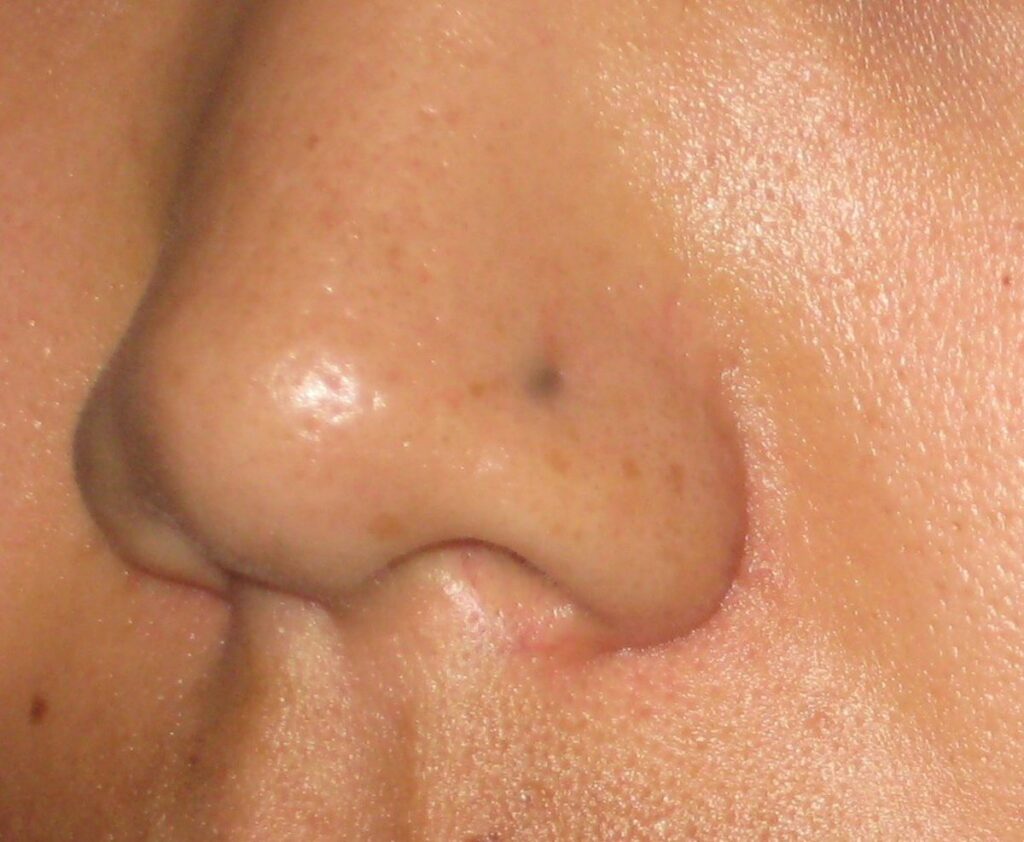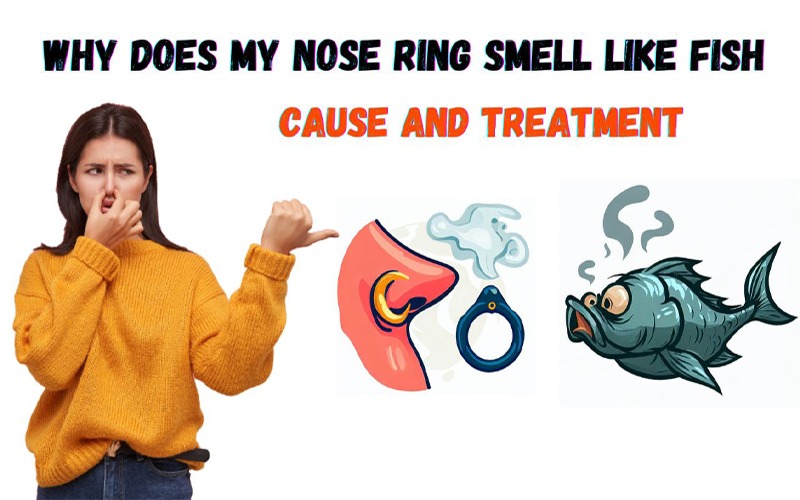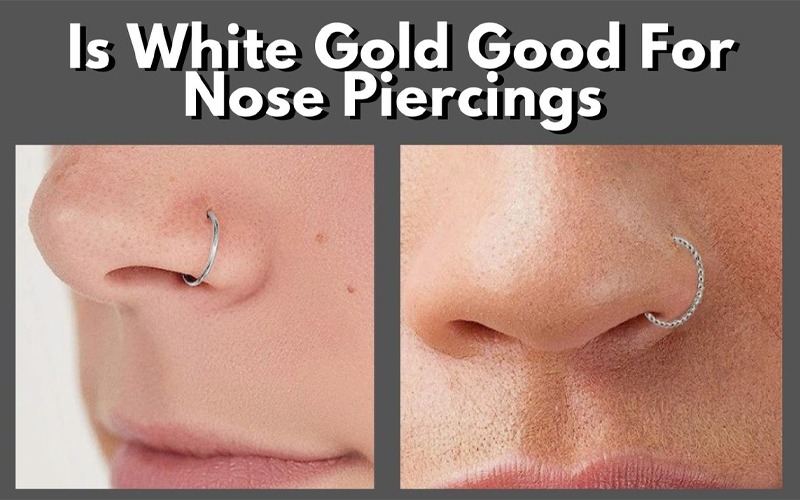The occurrence of a blackened area around a piercing hole is a concern that can arise from various factors, including the type of jewelry used, individual healing responses, or even the aftercare process. As a professional writer with a focus on dermatological health and body modifications, it is crucial to approach the subject with a clear understanding of the underlying causes and the range of solutions available. Initial steps often involve the simple switch to hypoallergenic materials and the implementation of a stringent cleaning regimen, yet these may not always suffice. For those who find themselves grappling with persistent discoloration, exploring the efficacy of topical treatments and discerning when to seek professional intervention becomes essential. It is this journey from initial discovery to successful resolution that we will now embark upon, laying out an informed path that bridges home remedies to expert care, while also highlighting the importance of preventative strategies to ensure the long-term health and appearance of one’s piercings.
Understanding Black Piercing Holes
Black piercing holes are often the result of skin oxidation around the site, which can be caused by the use of tarnished metals in body jewelry. When individuals express themselves through body art, the freedom to do so without the worry of undesirable effects, such as skin discoloration or infection, is paramount. Knowledge and proper care are essential to maintain the integrity of a piercing hole.
The skin’s reaction to tarnished metals, especially from jewelry like sterling silver, can lead to unsightly black or gray stains. These marks are not just a cosmetic concern but can also signal an underlying issue with the piercing hole, such as an infection or allergic reaction. Ensuring that the materials in contact with your skin are of high quality, such as implant-grade surgical stainless steel, titanium, or high-karat gold, is crucial for the preservation of both your expression of freedom and the health of your piercing.
Regular cleaning with a saline solution is not only a practice of good hygiene but also a ritual of self-care that can help remove the oxidation stains and prevent further discoloration. Yet, some cases of stubborn skin oxidation may transcend simple home care. If the shadow cast by a black piercing hole lingers, professional treatments from a dermatologist, including laser therapy or chemical peels, might be necessary to restore the skin’s natural hue.
The journey to personal liberation through body modification should not be marred by preventable complications. By choosing the right materials and committing to consistent aftercare, the beauty and statement of a piercing can remain uncompromised, reflecting the freedom it was meant to embody.
Initial Cleaning Techniques
Beginning with a proper cleansing routine, it is essential to address piercings with care and precision. Utilizing appropriate antiseptic solutions, such as saline, can help to mitigate the risks of infection and discoloration. Daily maintenance is crucial, and by following recommended care tips consistently, the appearance of black piercing holes can be significantly improved.
Gentle Cleansing Routine
Initiating a gentle cleansing routine is essential for the care and maintenance of piercing sites, particularly when aiming to minimize the appearance of darkened holes. Embrace the liberation of self-expression through body art by ensuring your piercings remain clean and vibrant. A saline solution is the cornerstone of a gentle cleansing routine, offering a safe and effective way to maintain your piercing’s hygiene without harsh chemicals.
| Step | Emotion Evoked |
|---|---|
| Replace jewelry with implant-grade materials | Reassurance |
| Clean with saline solution | Comfort |
| Use saline-soaked Q-tip for nostrils | Precision |
| Weekly sea salt soaks | Renewal |
| Consistent routine for a month | Commitment |
Appropriate Antiseptic Solutions
When first attending to a new piercing, opting for a saline solution as an antiseptic is crucial, as it effectively cleans the site while being gentle on the skin. Saline solutions support your personal expression by minimizing the risk of infection, ensuring the piercing clean process is safe and soothing. Steering clear of harsh substances like alcohol or hydrogen peroxide protects your skin’s liberty from irritation and unnecessary distress. It is vital to keep your piercing’s surroundings pristine and dry, thwarting any bacterial invasion that might threaten your autonomy over body modifications. Employing a cotton swab or gauze pad can enhance the precision of cleaning, while gently rotating the jewelry maintains the freedom of movement and prevents adherence to the skin.
Daily Care Tips
Building upon the foundation of using appropriate antiseptic solutions, daily care tips and initial cleaning techniques become instrumental in maintaining the integrity of a new piercing. Embrace the freedom of self-expression while ensuring your fresh piercing remains clean and vibrant. Here are concise daily care tips and techniques:
| Daily Action | Purpose | Method |
|---|---|---|
| Saline Solution Cleaning | Remove stains and tarnish | Clean thoroughly before reinserting |
| Sea Salt Soaks | Draw out impurities, reduce discoloration | Perform weekly |
| Q-tip Cleaning (Nostril) | Target inside of nostril piercings | Use saturated saline solution |
| Jewelry Replacement | Prevent further discoloration | Use implant-grade stainless steel |
| Follow Cleaning Regimen | Reduce gray/black area around piercing | Continue for at least a month |
Heed these guidelines to celebrate the journey of your fresh piercing without unwanted discoloration.
Choosing the Right Jewelry
Selecting the appropriate jewelry is crucial in preventing and eliminating black piercing holes. Hypoallergenic materials, like titanium and high-karat gold, are essential for those with allergies and sensitivities, ensuring the skin remains free from adverse reactions. Moreover, the size and fit of the jewelry must be precise, as improperly sized pieces can lead to irritation and exacerbate piercing complications.
Select Hypoallergenic Materials
Opting for jewelry crafted from hypoallergenic materials such as surgical stainless steel, titanium, or high-karat gold is essential in reducing the likelihood of irritation and avoiding the formation of black piercing holes. Implant-grade options like 316LVM and 316L stainless steel are especially favorable for initial piercings due to their low risk of causing irritation or tarnishing. Titanium and high-karat gold stand out as exemplary choices for individuals seeking both elegance and a reduced chance of discoloration or discomfort. Embracing these materials promotes not only personal expression but also ensures a greater degree of freedom from potential complications. Through conscientious selection and diligent aftercare, maintaining the integrity and aesthetic appeal of your piercing becomes a more attainable goal.
Jewelry Size and Fit
When choosing jewelry, it’s crucial to consider the dimensions and weight to ensure a comfortable fit that complements your physical features. For those who value their freedom and individuality, selecting the right jewelry size and fit is essential, especially for ear piercings which are often on display. Not only does the appropriate size ensure comfort and avoid stress on the piercing, but it also enhances your unique style.
- Comfort: Choose a size that won’t tug or pull, ensuring all-day ease.
- Proportion: Select pieces that are in harmony with your body’s scale.
- Style: Consider the occasion and your personal aesthetic for a seamless look.
Topical Treatments Explained
To mitigate the appearance of darkened skin surrounding piercing holes, topical treatments such as glycolic acid or chemical peels can be applied to exfoliate and rejuvenate the affected area. Glycolic acid is a type of alpha hydroxy acid (AHA) that promotes the shedding of the surface layer of the skin, encouraging the emergence of new, lighter skin cells. This non-invasive approach can be a beacon of hope for those seeking freedom from the shadows of past piercings.
Chemical peels, which often contain a higher concentration of glycolic acid or other exfoliating agents, delve deeper to remove dead skin layers and stimulate cell turnover. While these treatments are readily available, they must be used with precision to avoid further irritation or damage to the skin.
Hydrogen peroxide, known for its antiseptic properties, is another topical solution that may help lighten the affected area; however, its use should be limited due to its potential to cause skin dryness and irritation. It is crucial to approach the use of hydrogen peroxide with caution and follow up with a moisturizer to maintain skin hydration.
For those seeking a tailored solution, consulting with a skincare professional is advised. They can provide personalized advice and may recommend a regimen that includes a combination of treatments to achieve the best results. Moreover, they can guide you in selecting materials like 316LVM or titanium for initial piercings to prevent discoloration from occurring in the first place.
Professional Removal Options
Individuals seeking a definitive solution to eliminate black piercing holes may consider professional removal procedures, which involve a specialist doctor’s assessment and precise surgical techniques. Such methods provide the freedom from unwanted body modifications, ensuring a return to a more natural aesthetic. A thorough consultation is paramount as it helps to assess the potential for infection or inflammation and to determine the most appropriate course of action.
When opting for professional removal options, one can expect the following:
- A detailed examination of the affected area by a trained medical professional to ascertain the best removal method and to prevent any risk of infection or inflammation.
- A concise explanation of the procedure, including the use of local anaesthetic for comfort, and an overview of the post-operative care required to ensure optimal healing and minimize complications.
- Assurance of a controlled and safe environment for the procedure, which typically lasts between 20 to 30 minutes, and involves an elliptical excision to remove the piercing hole effectively.
It is essential to choose a reputable clinic, such as The London Cosmetic Clinic, which is known for its specialist doctors and high patient satisfaction rates. After the procedure, patients receive specific aftercare instructions, which may include the application of antibiotic cream and a follow-up appointment for stitch removal within one to two weeks. This structured approach not only aims to restore the skin’s appearance but also to liberate individuals from the physical and emotional burden of an unwanted piercing hole.
Prevention Strategies
While professional removal offers a tangible solution for existing black piercing holes, adopting proactive prevention strategies can significantly reduce the likelihood of their occurrence. The freedom to express oneself through body modifications like piercings should not be hindered by the potential for unsightly complications. Thus, implementing a few key prevention strategies can preserve the integrity of fresh piercings and ensure they heal beautifully and without discoloration.
Firstly, selecting high-quality, implant-grade surgical stainless steel jewelry is critical. This material is less likely to tarnish, preventing the unsightly blackening around the piercing site. The luster of premium jewelry not only enhances the aesthetic appeal but also contributes to a safer healing process.
Secondly, cleansing fresh piercings with a saline solution on a regular basis is a cornerstone of piercing care. This practice removes impurities that can lead to oxidation and subsequent discoloration. Simple yet effective, such hygiene measures are indispensable for maintaining piercing cleanliness.
Furthermore, avoiding jewelry composed of low-grade alloys or metals that are prone to tarnishing is a sound prevention strategy. By choosing the right materials, the risk of developing black piercing holes is considerably minimized.
Additionally, the implementation of weekly sea salt soaks can draw out impurities and support the overall health of the piercing area. This traditional method is both natural and effective in keeping the skin around the piercing clear and free from discoloration.
For those who encounter persistent issues despite these measures, seeking professional advice is advisable. Options such as laser treatment or chemical peels, although more invasive, can address discoloration that has proven resistant to other prevention strategies. In sum, a combination of informed choices and diligent care can keep piercings looking their best, offering freedom from aesthetic concerns.
Home Remedies to Try
Aside from professional treatments, there are several home remedies that individuals can employ to minimize or eliminate the appearance of black piercing holes. These methods are not only cost-effective but also empower you to take charge of your skin’s healing process. For those who cherish the freedom to manage their body’s care on their own terms, the following options can be particularly appealing:
- Tea Tree Oil: Known for its powerful antiseptic properties, it can be applied to the affected area to combat any infection or inflammation that may cause the darkened skin around a piercing. It’s essential to dilute the oil with a carrier oil, such as coconut or almond oil, to prevent irritation.
- Lemon Juice: The natural acidity of lemon juice can act as a gentle bleaching agent, which may help lighten the skin around the piercing hole. Apply freshly squeezed lemon juice carefully to the area with a cotton swab, avoiding any open wounds.
- Aloe Vera: This soothing plant is renowned for its skin-healing benefits. By applying aloe vera gel directly to the skin around your piercing, it can help reduce inflammation and promote healing, potentially reducing the appearance of black piercing holes.
When trying these home remedies, patience is key. The body’s healing process can be gradual, and it’s important to avoid further irritation to the piercing site. If you notice any signs of increased infection or inflammation, or if the condition does not improve, seeking professional medical advice is paramount. Always prioritize your skin’s health and safety above all else in your pursuit of resolving piercing-related cosmetic concerns.
Monitoring Healing Progress
Tracking the healing process of a piercing site is essential to ensure that home remedies are effective and that no complications are emerging. It is a proactive step that allows individuals to take control of their own wellness journey, embracing the freedom to manage their health without excessive reliance on medical intervention. As you pursue this path, vigilance is key in observing any changes around your piercing, which can be indicative of either healing or potential issues.
Carefully monitor the area for signs of infection or inflammation. A healthy healing process should show gradual improvement, with a decrease in discoloration and any discharge. Redness and swelling should subside, not intensify. If you notice persistent redness, experience warmth around your piercing, or see pus, these could be red flags signaling an infection. In such cases, freedom must be balanced with responsibility, and consulting a healthcare professional is advised.
Documenting the appearance of your piercing site can be incredibly useful. Take photos every few days to compare the progress. This visual diary can help you discern subtle changes that may not be immediately apparent. It also serves as a record to share with a medical professional if concerns arise.
Lastly, while monitoring your piercing, maintain a consistent cleaning routine as advised by piercing experts. This regimen should be gentle to avoid irritation but thorough enough to foster an aseptic environment. Remember, the journey to healing is not just about the destination – the eradication of a black piercing hole – but also about the autonomy and attentiveness you exercise along the way.





